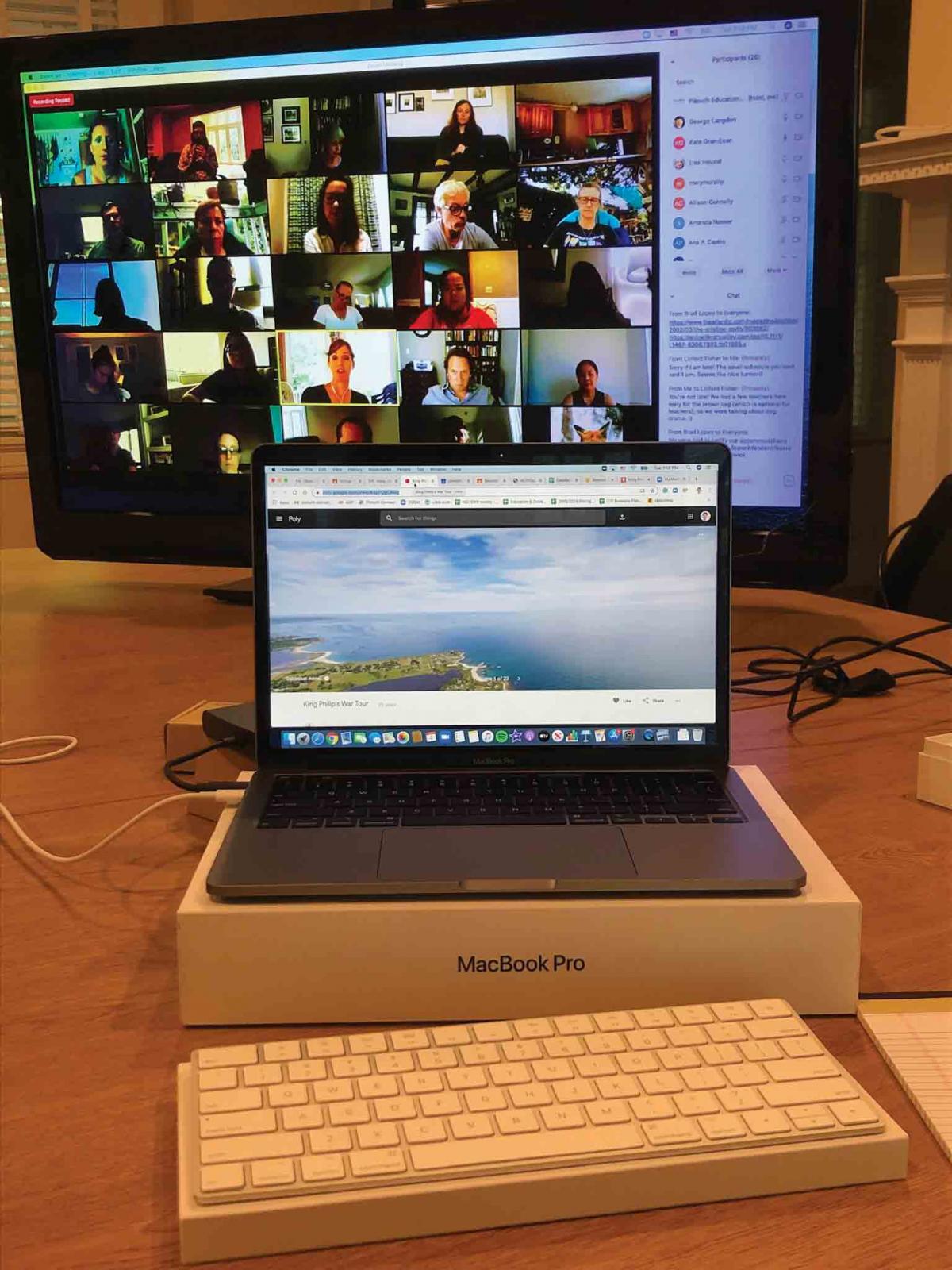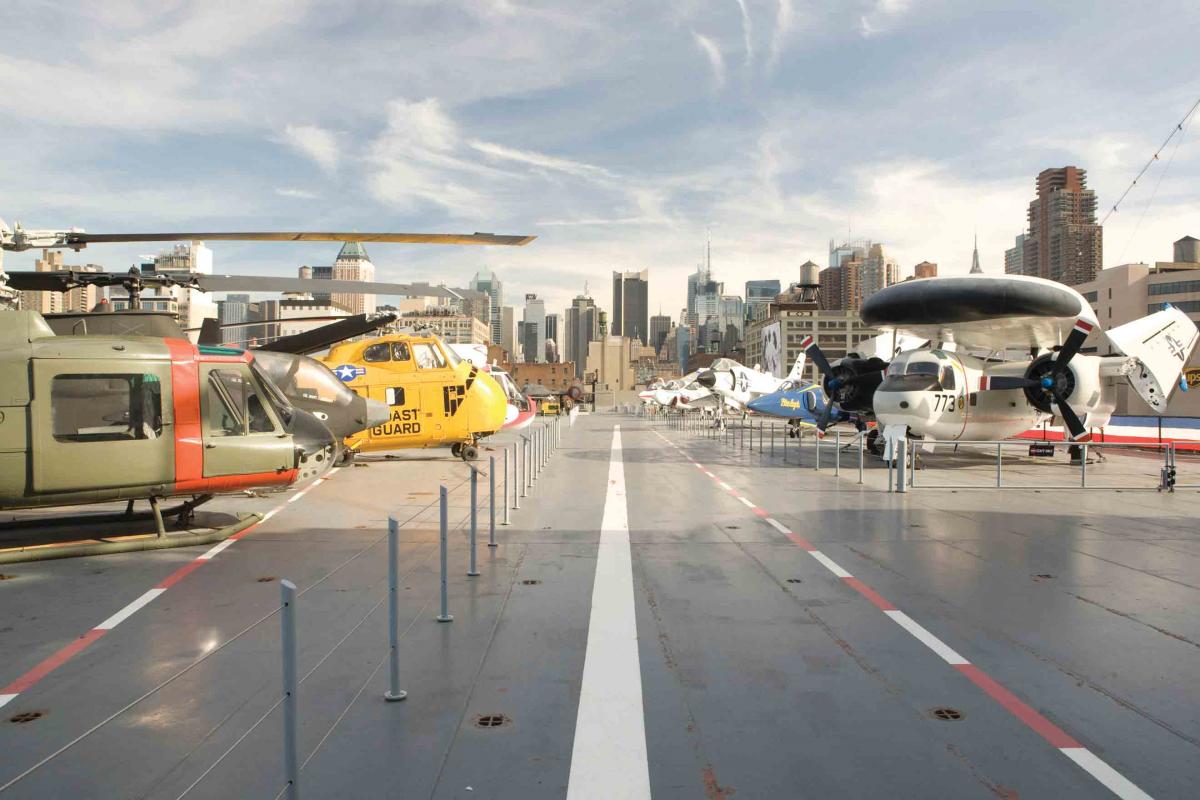While the pandemic has forced many educational institutions to delay, reduce, or even cancel courses, a handful of NEH-supported programs for educators recently kept to their original schedules. Instead of waiting until it was considered safe to meet in person, classes were moved online, though, in doing so, these programs gave up a major selling point, their location. Logging in from a wide range of time zones, participants would not be able to walk the Wampanoag ground where four centuries ago the Pilgrims came ashore, or to wander the flight deck of a Cold War aircraft carrier, or, in one case, to simply visit the campus of San Diego State University and be in the same room with colleagues from different disciplines of the humanities.
The organizers of “Beyond the Mayflower: New Voices from Early America” at Plimoth Plantation had promised to bring 25 K–12 teachers to “the room where it all happened,” said Associate Director of Education Hilary Goodnow, borrowing a line from Hamilton. Now, they had to offer something different.
Project Director Darius Coombs, who is Wampanoag, initially favored postponing. More than a year earlier, the Plimoth team had begun recruiting a faculty of equal parts Native American and non-Native American scholars. And they had scripted a curriculum featuring not only a pile of new scholarship to read, presentations, and team projects but also field trips to the Wampanoag Homeland and Plymouth Rock. The “power of place” was at the heart of their plans.
The calendar cast the deciding vote. The year 2020 marks the four hundredth anniversary of the Pilgrims landing on Cape Cod, a major commemorative moment for Plimoth Plantation, which this fall begins a celebration that will continue well into 2021 and the four hundredth anniversary of the first Thanksgiving. Basically, the timing was too good to pass up.
Soon enough, Goodnow was tramping through the woods with a tripod and a 360-degree camera, her good-natured husband not far behind, to shoot historical landmarks, geological features, and seascapes, later uploaded into Google Expeditions. Coombs photographed various settings as well, and became a believer in the decision to go forward with the project. The Plimoth team bought cardboard virtual reality viewers and mailed them to participants.
The suggestion, from an educator in one of Plimoth’s other programs, to use Google Expeditions to supply a digitally immersive environment, made all the difference, says Goodnow. Even then, says Coombs, they had to leave one part out. The end-of-institute Cape Cod clambake was, sadly, not Zoom-able. Instead, participants received Native American recipes and gathered online for a digital potluck, with each of the K–12 teachers describing their dish to the group in video conference.
Given the option to postpone until next year, most project directors of the 26 NEH summer seminars and institutes decided to wait. And all of the 15 landmarks workshops were postponed. The programs interviewed by Humanities magazine cited a variety of reasons for sticking to their schedules, an important one being that, as a practical matter, it was possible for them to do so. None of the major setbacks affecting families, cities, and regions during this pandemic had made it impossible for these particular project teams to go ahead and provide digitally what had been planned as in-person programs.
Lynda Kennedy, vice president of educational programs at the Intrepid Sea, Air, and Space Museum on the west side of New York City, took an optimistic view. “We thought this would be a great opportunity, a learning opportunity, for our participants, our scholars, and for us.” Potential benefits included teaching 25 K–12 educators not only about the history of the Cold War but also, if things went well, methods for bringing technological and pedagogical savvy to their own virtual classrooms.
The Intrepid boasts a large digital collection accessible through Google Exhibitions, but the team’s experience with remote teaching was limited to one-off sessions that lasted no more than a few hours. Now they were contemplating back-to-back days of five or six hours in a row of online programming—heavy blocks of screen time for everyone involved. In which case, the Intrepid team wanted to burnish their virtual skills before the first day of class. They hired an education consultant to put them through their paces and help develop a set of technology tools that they could use not only for their own lessons but impart to the teachers in their program.
In short, they learned by doing. “We talked a lot about failing up,” says Kennedy, who worried that a lot could go wrong but is now glad to list the many benefits that came with conducting the seminar online. All sessions were recorded, for example, and lesson plans developed by the participants were automatically filed online and available for other teachers to access. A curator whose spouse has a compromised immune system didn’t need to leave home to lead his session. And participants, seeing the museum through the eyes of a video camera held by a staff member on site, were able to visit areas that are usually closed to the public.
Compared with many educators who were sent home without warning, to teach remotely without preparation, these programs at least had some time to select digital platforms and make substitutions in their materials and lesson plans. And they had support from NEH, which assisted project teams in adjusting their curriculums and budgets (less money for travel and board, for example, more for technological support).
In debating whether to postpone, the project directors of “The Making of Modern Brazil: Marginal Spaces, Race, and Modernity,” an NEH seminar for college and university faculty at San Diego State University, said the deciding factor was the outstanding applicant pool they had attracted, with scholars representing a wide range of experience levels and disciplines, including geography, history, African studies, and literature.
“We didn’t want to give that up,” says Erika Robb Larkins, director of the Center for Brazilian Studies at San Diego State University.
Among the challenges facing Larkins and her project co-director Kathryn Sanchez, a professor of Brazilian studies at the University of Wisconsin, were how to make sure that participants were talking to each other, spontaneously, as they would during a coffee break or at the end of a class.
Working groups helped sort participants according to who was working on a book project, who was developing a study abroad program, and who taught African-American studies, but less formal measures were needed. One low-pressure way of bringing out the natural chemistry of the group, the directors found, was to keep the Zoom call open during lunch and at the end of the day.
In a way, the pandemic also helped. Project directors reported near perfect attendance and high levels of enthusiasm as participants made the most of this opportunity to focus on their professional development and take their minds off the tumult of this extraordinary year. It didn’t always work out that way, though. In June, as the seminar on Brazil discussed issues of race and society in South America, a participant in Minneapolis mentioned that protesters were just then walking past her window.
*A sentence in this article was corrected on November 23, 2020. The institution hosting the NEH seminar "The Making of Modern Brazil" was San Diego State University, not the University of California, San Diego, as previously stated.








